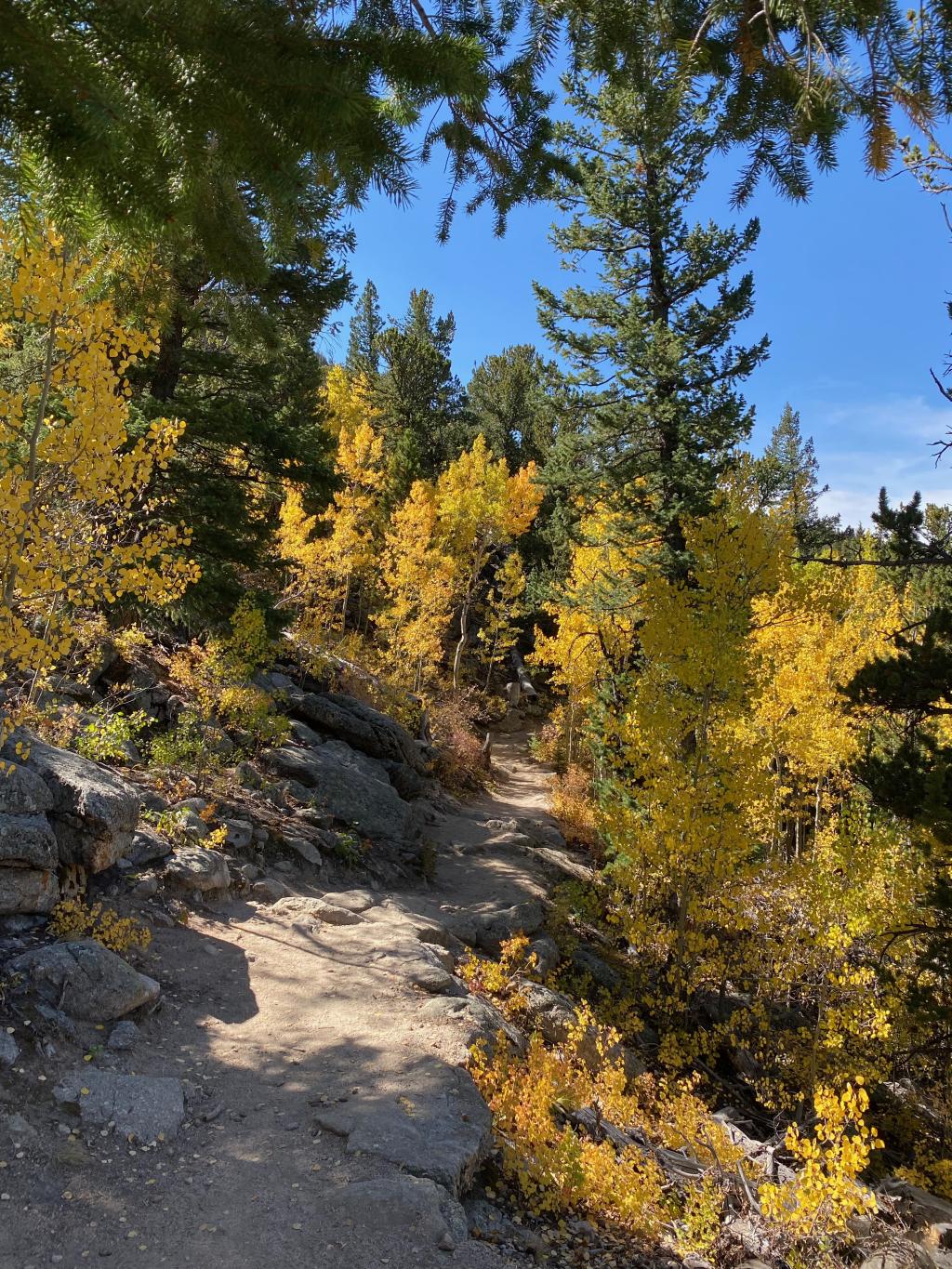
DENVER – Colorado’s vibrant “leaf-peeping” season has officially begun as patches of color pop among the trees. While the stunning fall foliage display is worthy of the annual crowds at Colorado state parks, Colorado Parks and Wildlife (CPW) encourages park visitors to protect our natural resources while enjoying them.
“We ask that folks “rushing for gold” plan ahead and have location backup plans because parks get crowded and parking is limited at certain trailheads,” said Todd Farrow, park manager at Golden Gate Canyon State Park. “Please only park in designated areas and remember that parking along roads is prohibited because it destroys vegetation, can ignite wildfires and blocks emergency vehicles.”
All Coloradans and visitors can contribute positively to conserving our natural resources by respecting our outdoor shared spaces, as outlined below.
Know Before You Go
The fall season is busy at Colorado state parks and parking lots get full. If a parking area is full, move on to the next designated parking area and follow instructions given by park rangers. Park rangers can issue parking tickets to people who park illegally or block traffic. CPW also recommends having a backup plan if your desired trailhead, park or location is crowded or closed.
Use CPW’s
Park Finder Tool to see a Colorado state parks map. To learn more about outdoor activities at Colorado state parks, visit
cpw.state.co.us/thingstodo.
Stick To Trails
Shortcuts and that perfect selfie can be tempting, but staying on the path will decrease your risk of injury and protect trailside plants and local wildlife.
Download the
COTREX app to discover Colorado’s extensive network of trails.
Leave It As You Find It
Parking in designated areas is critical — undesignated parking can destroy vegetation, ignite wildfires in dry grass and block first-responder vehicles in case of an emergency. Show you care about our state parks by not driving over plants, flowers, rocks or through water streams.
Colorado’s trees provide beautiful leaf-peeping photos, shade and oxygen. Help keep them thriving by not carving into them or pulling down branches that may kill or disfigure them.
Keep Wildlife Wild
Many species call Colorado home, making it the perfect destination for wildlife watching on state park trails. Protect yourself and your loved ones from potential wildlife conflicts by watching wild animals from a safe distance to avoid startling or forcing them to flee.
Keep dogs leashed when enjoying dog-friendly trails and put waste bags in a trash can. Do not hang waste on trees or put waste bags in toilets.
Do not feed or approach young wildlife and be
bear aware on trails. If you see wildlife that appears sick or injured, leave it alone. Call a
Colorado Parks and Wildlife office and consult a trained wildlife officer for guidance.
Share our Trails and Parks
Being kind and considerate to others outdoors helps build more inclusive spaces and allows everyone a personal connection to nature.
“We want everyone to have a great time experiencing the vibrant colors and the natural wonders our beautiful state has to offer,” said Farrow. “No matter where you plan to explore this fall, please respect our natural resources, park staff, volunteers and fellow recreationists out searching for Colorado gold.”
Join us in keeping Colorado, Colorado. Read about the Keep Colorado Wild Pass and how it benefits Colorado’s wildlife and state parks at
cpw.info/keepcoloradowild and
cpw.info/keepcoloradowildpassspanish.

